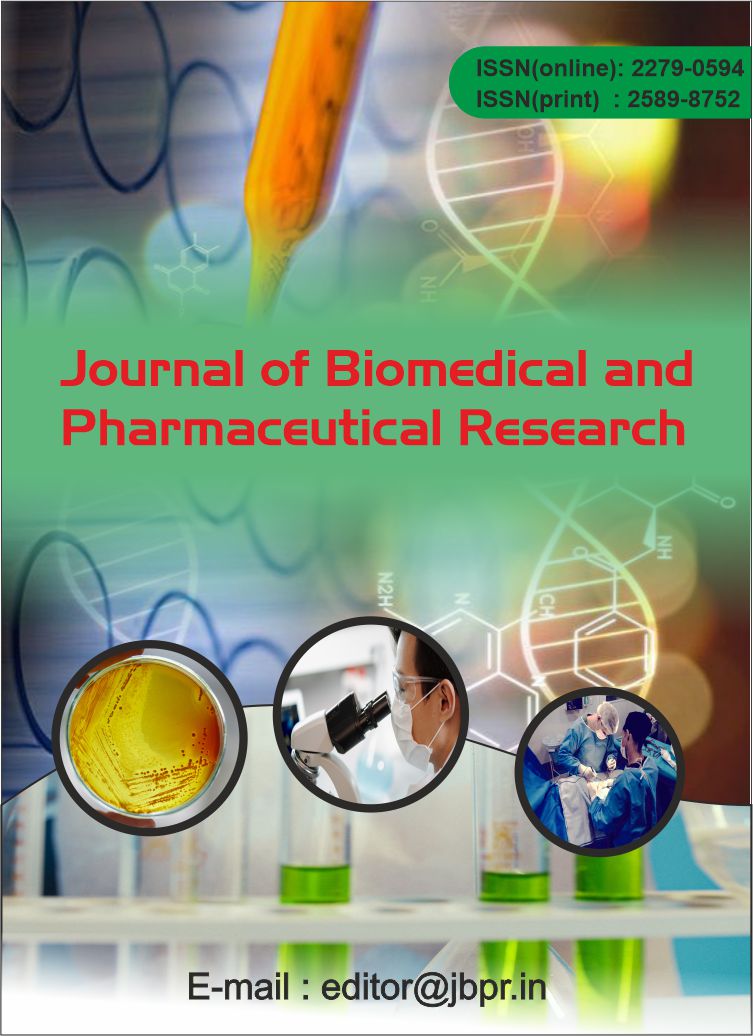A STUDY ON CORD BLOOD BILIRUBIN LEVELS IN A TERTIARY CARE CENTRE OF HARYANA IN INDIA
Abstract
To determine the level of cord blood bilirubin in all healthy term newborns and asses its usefulness in predicting neonatal jaundice. Neonatal jaundice (NNJ) is an interesting, complicated and controversial clinical problem. It is a cause of concern for the parents as well as pediatricians. The concept of prediction of jaundice offers an attractive option to pick up babies at risk of neonatal hyperbilirubinemia. Physical examination is not a reliable measure of serum bilirubin. Under these circumstances it would be desirable to be able to predict the risk of jaundice, in order to implement early treatment and thereby minimize the risk of bilirubin dependent brain damage.Neonatal Hyperbilirubinemia has been defined as the bilirubin levels > 12.9 mg/dl in term babies and 15 mg/dl in preterm babies.Neonatal jaundice is visible manifestation in skin and sclera of elevated serum concentrations of bilirubin and this usually occurs in neonates if serum bilirubin level is >5 mg/dl. Most adults are jaundiced when total serum bilirubin (TSB) levels exceed 2.0 mg/dL. Kernicterus and near miss kernicterus are neonatal conditions that are associated with irreversible or reversible brain injury respectively.5 Concerns regarding jaundice have increased after reports of bilirubin encephalopathy occurring in healthy term infants without hemolysis.The study was conducted in 100 term newborns in neonatal unit, Department of Pediatrics, Maharishi Markandeshwar Institute of Medical Sciences and Research (MMIMSR), Mullana, from September 2012- July 2013. Serum bilirubin estimation was done in the biochemistry department of MMIMSR , Mullana. Serum bilirubin estimation was done by Diazo method in which a detergent is used to accelerate the reaction is used. Incidence of NNJ in our study is 14 %. Mean total bilirubin on third post natal day was 9.14 mg/dl. Using CBB level of ≥ 1.9 mg/dl as a cut-off, NNJ can be predicted with sensitivity of 92.8%, specificity of 83.7 %, positive predictive value of 48.1 % and negative predictive value of 98.6 %. The Negative Predictive Value (98.6%) in the present study suggests that in healthy term babies (without RH and ABO incompatibility with Cord Blood Bilirubin ≤ 1.9 mg/dl ) cord serum bilirubin can help to identify those newborns who are unlikely to require further evaluation and intervention. These newborns can be discharged with assurance to parents. Babies with CBB level ≥ 1.9 mg/dl should be followed more frequently.
Keywords: Newborn, Neonate, Neonatal Jaundice, Cord blood bilirubin.
![]() Journal of Biomedical and Pharmaceutical Research by Articles is licensed under a Creative Commons Attribution 4.0 International License.
Journal of Biomedical and Pharmaceutical Research by Articles is licensed under a Creative Commons Attribution 4.0 International License.





